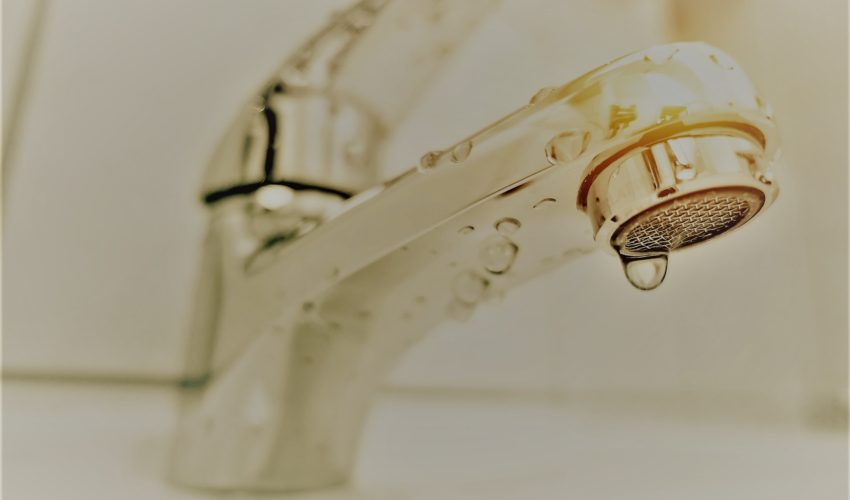Useful Strategies for Fixing Low Water Pressure in Your Home
Useful Strategies for Fixing Low Water Pressure in Your Home
Blog Article
Right here underneath you might get additional reliable expertise concerning Low Water Pressure in the House?.

Low water stress in your house can be an irritating problem, impacting whatever from bathing to cleaning recipes. If you're experiencing weak water flow, there are numerous possible causes and remedies to discover. In this overview, we'll discuss common factors for low water stress and sensible steps to deal with the issue efficiently.
Introduction to Low Tide Stress
Low tide stress happens when the circulation of water from your faucets, showers, and other fixtures is weaker than common. This can make everyday tasks a lot more difficult and much less effective. Understanding the sources of low water pressure is essential to finding the right solution.
Typical Causes of Low Water Stress
Pipeline Obstructions
Gradually, pipes can end up being blocked with mineral deposits, sediment, or debris, restricting the circulation of water. This is a typical issue in older homes with galvanized steel pipelines.
Corrosion
Corrosion within pipes can result in leakages and reduced water stress. Rust accumulation can constrict water flow, specifically in aging plumbing systems.
Faulty Pressure Regulatory Authorities
Stress regulators are accountable for maintaining regular water pressure in your home. If they malfunction, it can lead to low water pressure or unequal flow throughout the house.
Local Supply Of Water Issues
In some cases, the issue exists outside your home. Community water system concerns, such as main line leakages or maintenance work, can temporarily decrease water pressure in your location.
Just How to Detect Low Water Pressure
Examining Faucets and Fixtures
Beginning by examining the water stress at different taps and fixtures throughout your home. If the concern is separated to particular locations, it might suggest localized issues.
Examining Pipelines
Inspect noticeable pipelines for indicators of leaks, deterioration, or obstructions. Take note of any kind of uncommon noises, such as banging or rattling pipes, which could indicate issues within the plumbing system.
Consulting with a Plumber
If you're not able to identify the root cause of low tide pressure, take into consideration hiring a professional plumber to perform a detailed inspection. They can recognize underlying problems and recommend ideal solutions.
Do It Yourself Solutions to Fix Low Water Stress
Cleaning Up Aerators and Showerheads
Mineral deposits can accumulate in aerators and showerheads, reducing water circulation. Get rid of and clean these elements consistently to boost water pressure.
Flushing Water Heater
Debris buildup in the water heater can limit circulation and reduce efficiency. Purging the container occasionally aids eliminate sediment and maintain optimal efficiency.
Examining Pressure Regulator
Ensure that the stress regulator is functioning correctly. Adjusting or replacing the regulatory authority can aid bring back proper water pressure throughout your home.
Clearing Up Clogs in Piping
For small blockages, attempt utilizing a plumbing serpent or chemical drain cleaner to clear blockages in pipes. Beware when making use of chemicals and follow safety and security guidelines.
When to Call a Specialist Plumber
If DIY initiatives fail to fix the problem or if you suspect significant plumbing issues, it's best to look for help from a certified plumber. They have the proficiency and tools to attend to intricate concerns safely and effectively.
Safety Nets to Maintain Water Pressure
Regular Upkeep
Schedule regular maintenance for your plumbing system to prevent problems such as deterioration, leakages, and obstructions. Resolving minor problems early can help prevent even more considerable repair services later on.
Mounting a Pressure Booster
Think about setting up a pressure booster pump to enhance water pressure in areas with consistently low flow. This can be especially beneficial for multi-story homes or residential properties with high-demand fixtures.
Monitoring Water Usage
Bear in mind water use habits and avoid overtaxing the plumbing system. Easy modifications, such as incredible showers and washing loads, can aid keep ample water pressure.
Conclusion
Dealing with low water pressure can be irritating, however determining the underlying causes and implementing ideal options can recover optimal flow throughout your home. Whether it's cleaning aerators, evaluating pipelines, or seeking advice from a plumber, taking aggressive actions can make sure a stable supply of water for your daily requirements.
FOUR WAYS TO FIX LOW WATER PRESSURE NOW
Turning on a shower or faucet only to find the water comes out in a sad, slow drizzle is never a good feeling. How exactly are you supposed to wash a pan or take a quick shower when it takes 10 minutes just to rinse off a little soap? The good news is that when your water pressure is bad, there's always a cause: typically one that can be easily fixed. Here are some of the most common causes of low pressure and what you can do to fix the issue:
DEBRIS AND MINERAL DEPOSIT BUILDUPS
If you notice low water pressure from just one or two of the fixtures in your house, the problem likely has to do with debris buildup. Water is full of minerals and other debris, all of which can accumulate in your pipes and on your fixtures. This can cause a blockage that affects how much water flows through. To fix this, try filling a small plastic bag with white vinegar, and use a rubber band to hang it around your showerhead or faucet. Let the head of the fixture soak for a few hours, and the vinegar should loosen the deposits.
WATER LEAKS
Leaks are another common cause of low water pressure. If water is flowing out of your plumbing through a hole or crack before it can reach your fixture, the pressure coming out of the faucet or showerhead will be lower. A plumbing professional is your best bet for finding and repairing a leak in your water supply pipes.
Leaks are another common cause of low water pressure. If water is flowing out of your plumbing through a hole or crack before it can reach your fixture, the pressure coming out of the faucet or showerhead will be lower. A plumbing professional is your best bet for finding and repairing a leak in your water supply pipes.
FOUR WAYS TO FIX LOW WATER PRESSURE NOW
Turning on a shower or faucet only to find the water comes out in a sad, slow drizzle is never a good feeling. How exactly are you supposed to wash a pan or take a quick shower when it takes 10 minutes just to rinse off a little soap? The good news is that when your water pressure is bad, there's always a cause: typically one that can be easily fixed. Here are some of the most common causes of low pressure and what you can do to fix the issue:
DEBRIS AND MINERAL DEPOSIT BUILDUPS
If you notice low water pressure from just one or two of the fixtures in your house, the problem likely has to do with debris buildup. Water is full of minerals and other debris, all of which can accumulate in your pipes and on your fixtures. This can cause a blockage that affects how much water flows through. To fix this, try filling a small plastic bag with white vinegar, and use a rubber band to hang it around your showerhead or faucet. Let the head of the fixture soak for a few hours, and the vinegar should loosen the deposits.
WATER LEAKS
Leaks are another common cause of low water pressure. If water is flowing out of your plumbing through a hole or crack before it can reach your fixture, the pressure coming out of the faucet or showerhead will be lower. A plumbing professional is your best bet for finding and repairing a leak in your water supply pipes.
Leaks are another common cause of low water pressure. If water is flowing out of your plumbing through a hole or crack before it can reach your fixture, the pressure coming out of the faucet or showerhead will be lower. A plumbing professional is your best bet for finding and repairing a leak in your water supply pipes.
A VALVE ISSUE
If you have low water pressure throughout your home, check your main shut-off valve to make sure it's completely open. You may also want to see if there's a pressure-reducing valve installed. If there is, have a plumber help you adjust the settings to get the pressure you're looking for.
OTHERS USING WATER
Believe it or not, your low water pressure could be caused by your neighbors. If you notice low pressure at certain times of day, it may be because you and the people living next to you have similar schedules - when everyone is showering at the same time, the pressure will be lower in every home. Low pressure throughout the neighborhood may also be caused by an issue with your municipal water supply. If that's the case, call the supplier to see if they're working on the issue.
https://www.rotorooter.com/blog/water-leaking/low-water-pressure-fixes/

I am just very focused on 4 Ways to Troubleshoot Low Water Pressure and I hope you enjoyed the page. So long as you liked our blog posting please make sure you remember to pass it around. I treasure reading our article about Dealing with Low Water Pressure in Your Home.
Schedule Today Report this page